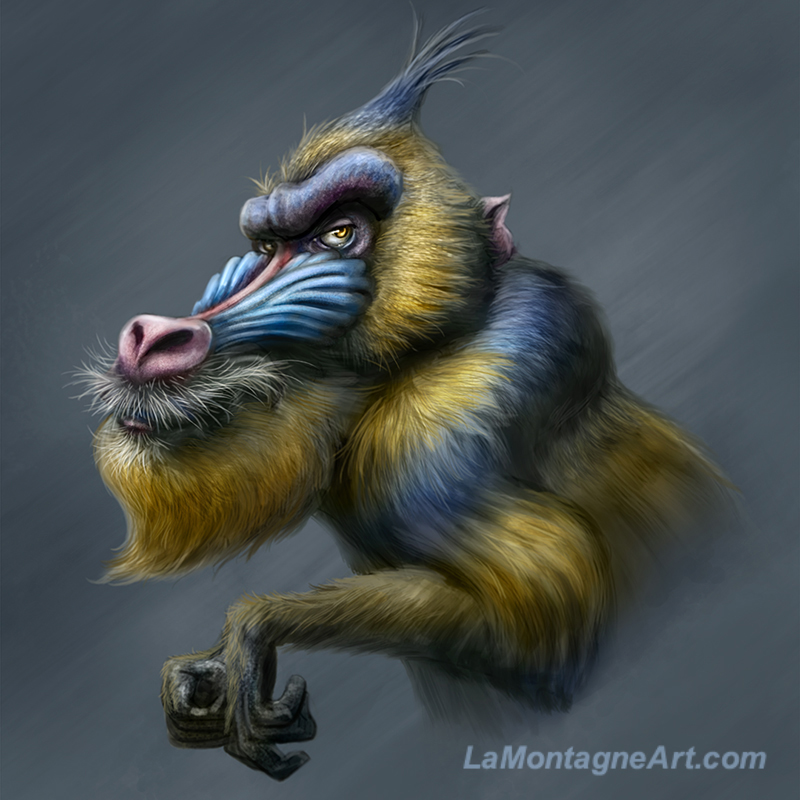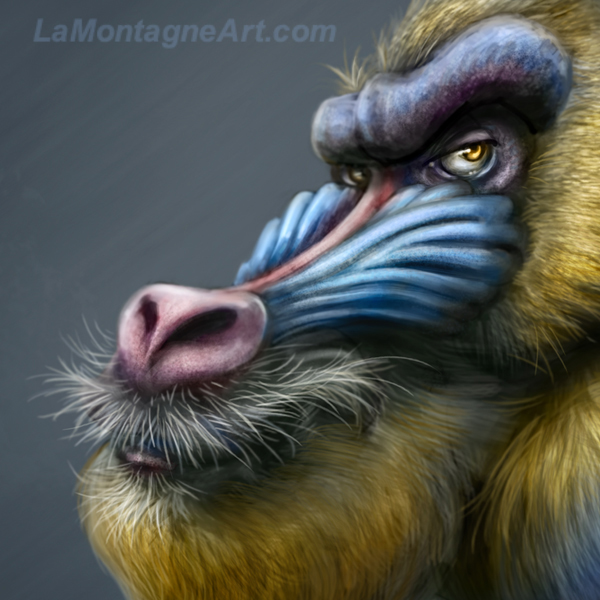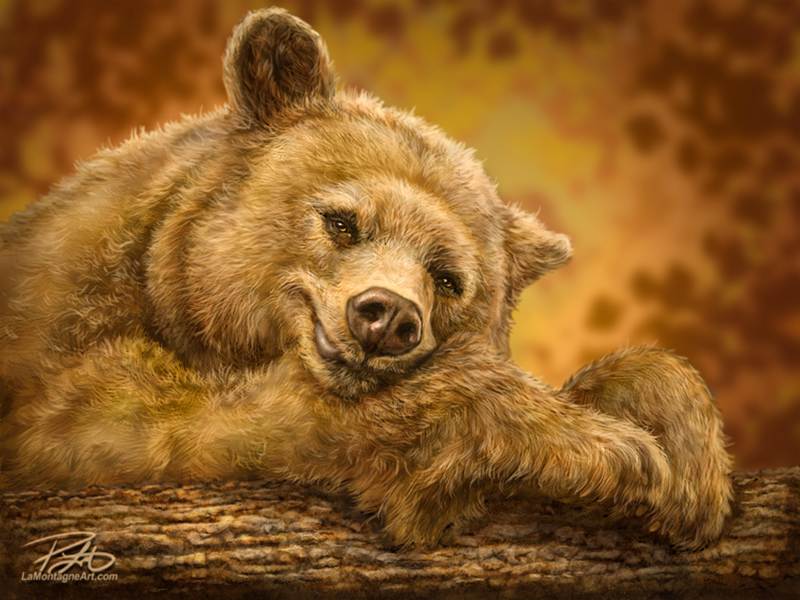
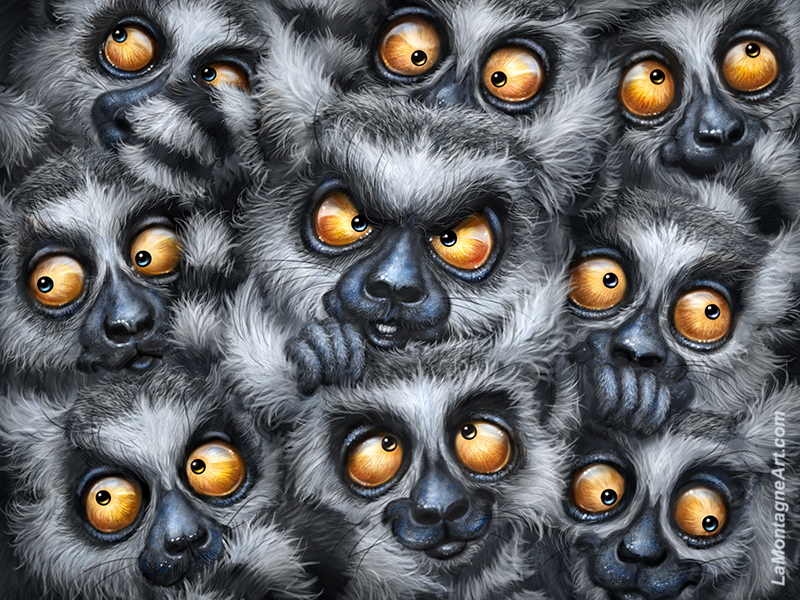 Some paintings come together easily. A reference photo may immediately inspire an idea, I’ll sit down and mock up sketches, and it will almost feel like the image creates itself.
Some paintings come together easily. A reference photo may immediately inspire an idea, I’ll sit down and mock up sketches, and it will almost feel like the image creates itself.
This was NOT one of those paintings.
I’ve had more than a few frustrating experiences painting where the work didn’t seem to want to come together. I’ve beaten myself up about it, wrung my hands and thought, “Well, I used to know how to do this; I guess I don’t anymore.”
Eventually, I’ve made it through, and some of those paintings became bestsellers.
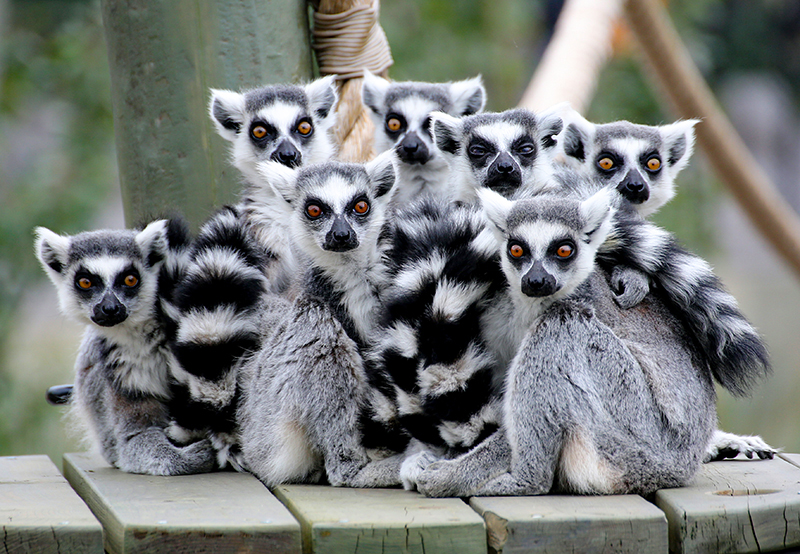 This painting has been something entirely different. Even though I had a clear idea of what I wanted it to look like, I couldn’t get it to feel right. It was inspired by a photo I took at the Calgary Zoo, and I even had the name of the piece before I painted the first brushstroke.
This painting has been something entirely different. Even though I had a clear idea of what I wanted it to look like, I couldn’t get it to feel right. It was inspired by a photo I took at the Calgary Zoo, and I even had the name of the piece before I painted the first brushstroke.
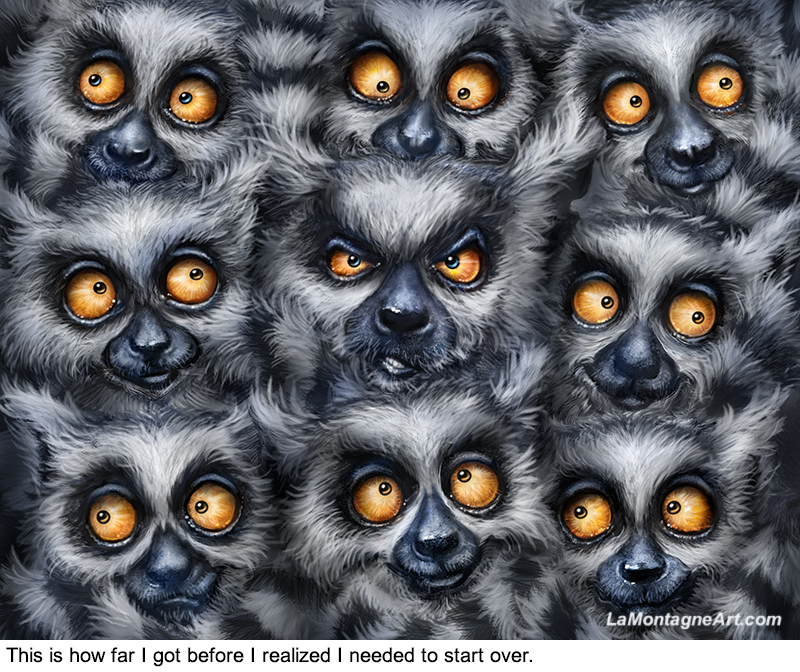
I came very close to calling this piece finished a couple of months ago. But I showed it to my artist friend Derek, who kindly told me what I already knew. It wasn’t working. The faces were laid out too uniformly, like a tic-tac-toe grid, and the personality wasn’t there.
So I went back to the beginning, discarding dozens of hours of work to start over again. The difference this time, however, was that I looked at it as one piece containing several characters rather than several characters I created separately and then assembled into one piece.
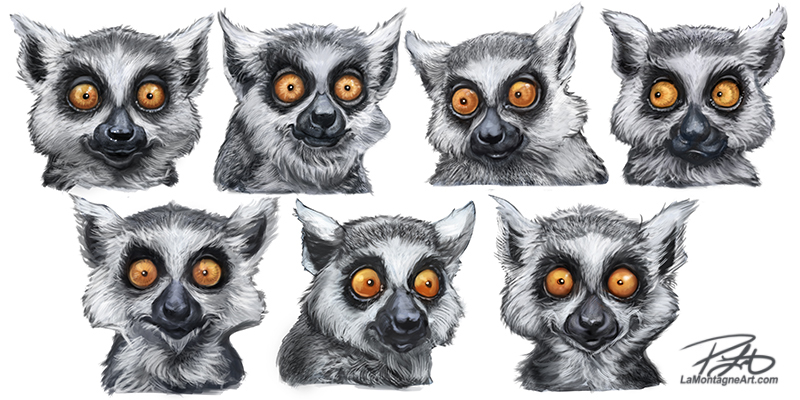 The first go round, I used a specific reference for each lemur I painted and drew them all individually. Even after I assembled them, I kept going back to the individual references for each, and it wasn’t easy to keep track of it all. I made it far too complicated.
The first go round, I used a specific reference for each lemur I painted and drew them all individually. Even after I assembled them, I kept going back to the individual references for each, and it wasn’t easy to keep track of it all. I made it far too complicated.
When I started over, I abandoned the individual reference. I focused on the expressions and characters without worrying about making each look like a specific reference because I didn’t need it. Lemurs are lemurs; they don’t look all that different from each other. As long as the central character had the most personality, the others were the supporting cast, even though their details were still necessary.
 The key to getting this piece back on track was to stop painting individual trees and just paint the forest. Even though this was a challenging painting, with a lot of redrawing and direction changes, I learned from the frustration. These kinds of lessons always contribute to better work in the future.
The key to getting this piece back on track was to stop painting individual trees and just paint the forest. Even though this was a challenging painting, with a lot of redrawing and direction changes, I learned from the frustration. These kinds of lessons always contribute to better work in the future.
On Marc Maron’s WTF podcast this week, director James Mangold talked about lessons he has learned in filmmaking. He said that even though you need to start with a plan, if you hold it too tightly, you don’t leave any room for discovery in the process.
The finished piece still doesn’t quite match my original inspiration and vision. And while there are still the same nine lemurs as before, they’re more dynamic in their placement, different angles, placed higher and lower. There are more tails here and there, and I added hands for the ringleader as the central character.
But when I spend too much time with a painting, I can’t see it with fresh eyes anymore, so I don’t know if it’s any good.
What’s worse is that January and February are tough for me, as they are for many people. We’ve been enduring a period of bitter cold the past couple of weeks, and that always sucks the life out of me. I’ve forced myself to go for a few hikes and bundled-up bike rides to get out of the house and exercise, but it’s been a slog.
It’s also a time of year when I spend a lot of money on my business. From the final 50% booth installment for The Calgary Expo, the deposit for registering for the Banff Christmas Market, my first quarterly tax installment, paying for new promotional items, test prints for new products, plus restocking prints for anticipated spring client orders and Expo, and all the materials that go with that, it’s a part of self-employed stress I never get used to. It’s a maxim as old as time that you must spend money to make money, but nothing is guaranteed, so it’s always uncomfortable.
Finally, with the editorial cartoon side of my work, I must follow the deluge of bad news that breaks daily because he-who-shall-not-be-named continues his insane barrage of verbal and economic attacks on Canada. As much as I’d like to turn off the news to preserve my sanity, I can’t do that and still do my job.
All of this, aside from the 51st-state bullshit, is business as usual for this time of year. But when it piles on, it usually puts me in a pretty dark place.
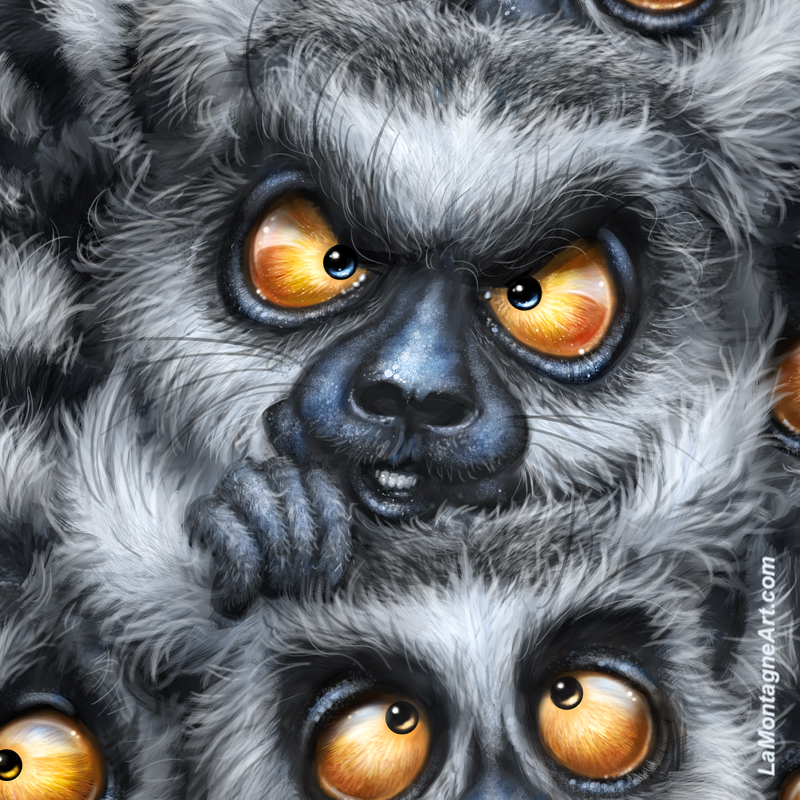 Under these circumstances, my perception of how any finished piece looks is distorted. I have no idea how I feel about this painting and probably won’t for a while. I feel more relief that it’s finally over than satisfaction with the result.
Under these circumstances, my perception of how any finished piece looks is distorted. I have no idea how I feel about this painting and probably won’t for a while. I feel more relief that it’s finally over than satisfaction with the result.
I’ve done several paintings in my career where I’ve felt indifference for them upon completion but grew to love them over time. Maybe this will be one of those, but I have no way to know. Artists tend to put too much pressure on themselves and make more out of their work than they should, and I am no exception. Ultimately, it’s just a painting of some funny-looking lemurs, and I have spent enough time on it.
“Art is never finished, only abandoned.”
Nobody knows if Leonardo da Vinci really said it, but it’s an oft-repeated quote because of how much it resonates with artists, that there is always room for improvement, and perfection isn’t possible.
With that in mind, I’m moving on and will start a new painting in a day or two.



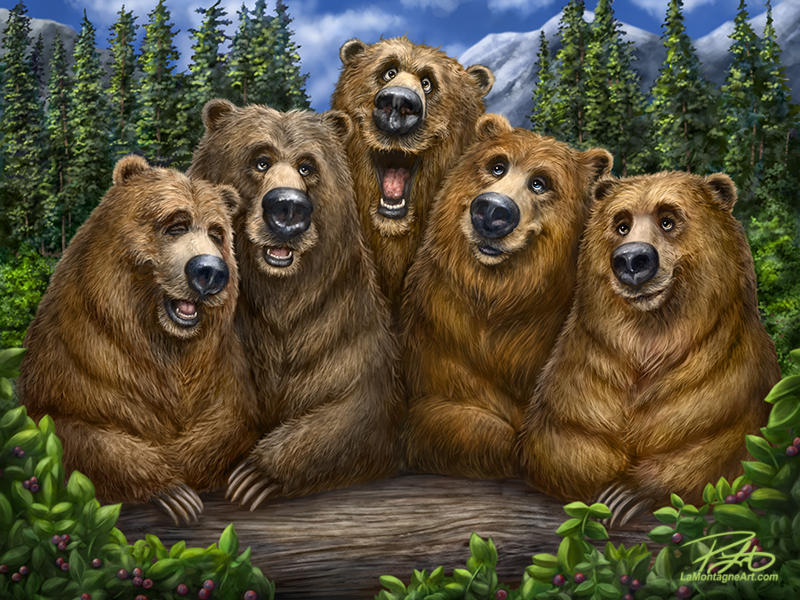 “How long does it take you to paint one of these?”
“How long does it take you to paint one of these?”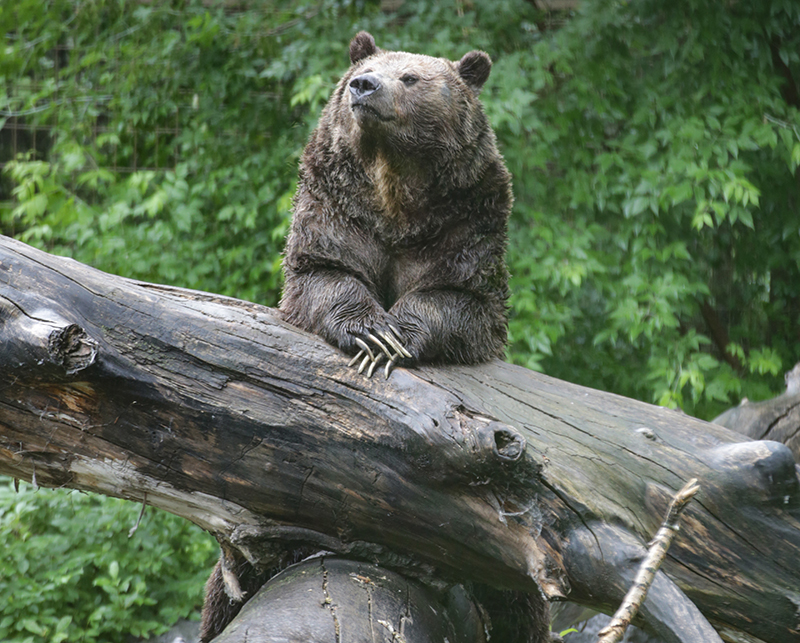 The spark for this painting was reference photos I took at the
The spark for this painting was reference photos I took at the 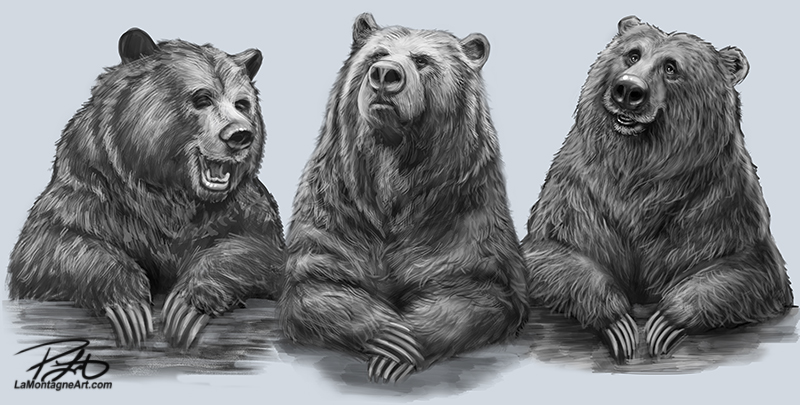 I did some drawings shortly after that and returned to them whenever I had the time. While Skoki was the inspiration, I used several bears in my photo archive as reference for the bodies and faces. If nothing else, I figured they would be good sketches for the book I’ve been talking about for years, but to my eternal shame, never deliver.
I did some drawings shortly after that and returned to them whenever I had the time. While Skoki was the inspiration, I used several bears in my photo archive as reference for the bodies and faces. If nothing else, I figured they would be good sketches for the book I’ve been talking about for years, but to my eternal shame, never deliver.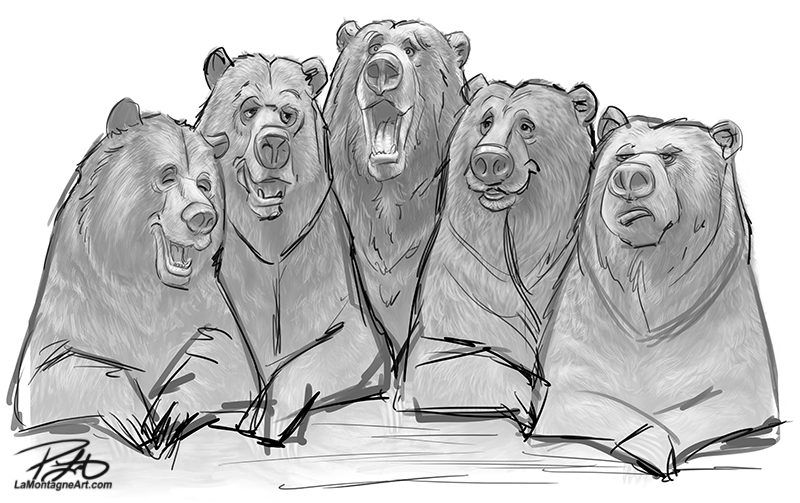 Once I had several sketches, I pieced them together, trying to find a composition I liked. The five grizzly bear buddies soon became five members of a family. It reminded me of a grizzly bear version of a Sears family portrait photo shoot. Refining the shapes so they fit together, and reimagining the expressions meant losing a lot of the sketch detail I had already drawn, but that’s just part of the process.
Once I had several sketches, I pieced them together, trying to find a composition I liked. The five grizzly bear buddies soon became five members of a family. It reminded me of a grizzly bear version of a Sears family portrait photo shoot. Refining the shapes so they fit together, and reimagining the expressions meant losing a lot of the sketch detail I had already drawn, but that’s just part of the process.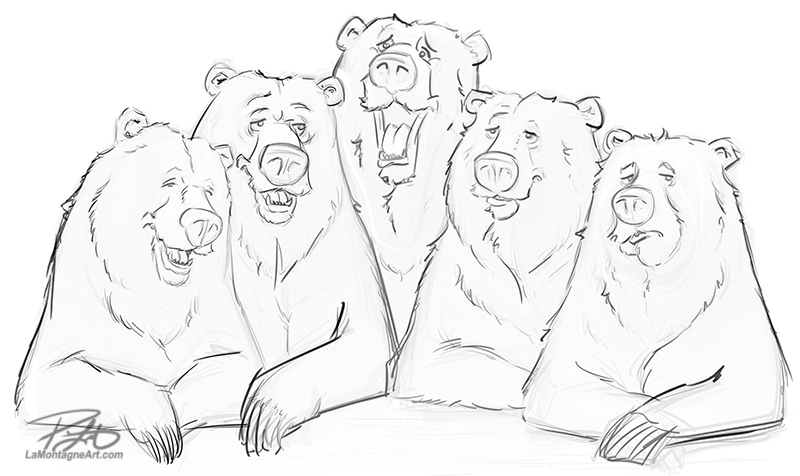 Many paintings begin as one idea but take on their own life while I work. I have no idea how many hours I’ve put into this piece, but it’s more than any painting before.
Many paintings begin as one idea but take on their own life while I work. I have no idea how many hours I’ve put into this piece, but it’s more than any painting before.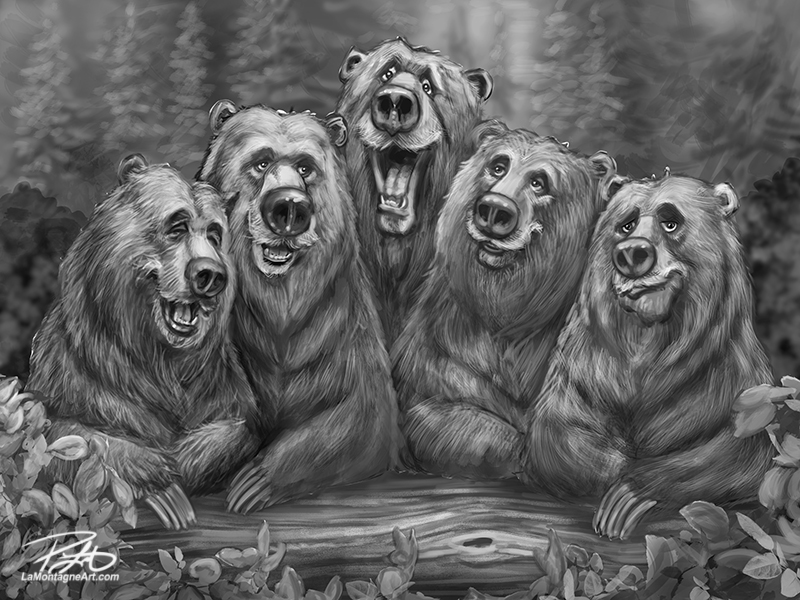 Rather than work in colour from the start, as with other paintings, I started this one in greyscale because I wanted to play with the values and experiment with the scene. Once I had a good starting point, I painted colour in the background and foreground, leaving the grizzlies for last.
Rather than work in colour from the start, as with other paintings, I started this one in greyscale because I wanted to play with the values and experiment with the scene. Once I had a good starting point, I painted colour in the background and foreground, leaving the grizzlies for last.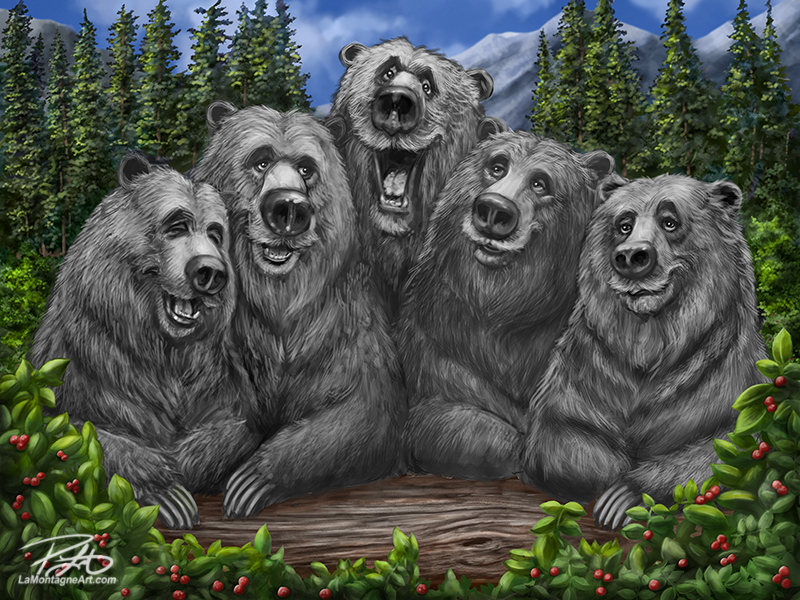 Initially, the berries in the foreground were bright red. But when I showed this work-in-progress image to my buddy, Derek, at Electric Grizzly Tattoo, he suggested they might be a distraction from the bears. It was a helpful critique. So, I toned down the berries and made them a deeper burgundy and blue.
Initially, the berries in the foreground were bright red. But when I showed this work-in-progress image to my buddy, Derek, at Electric Grizzly Tattoo, he suggested they might be a distraction from the bears. It was a helpful critique. So, I toned down the berries and made them a deeper burgundy and blue.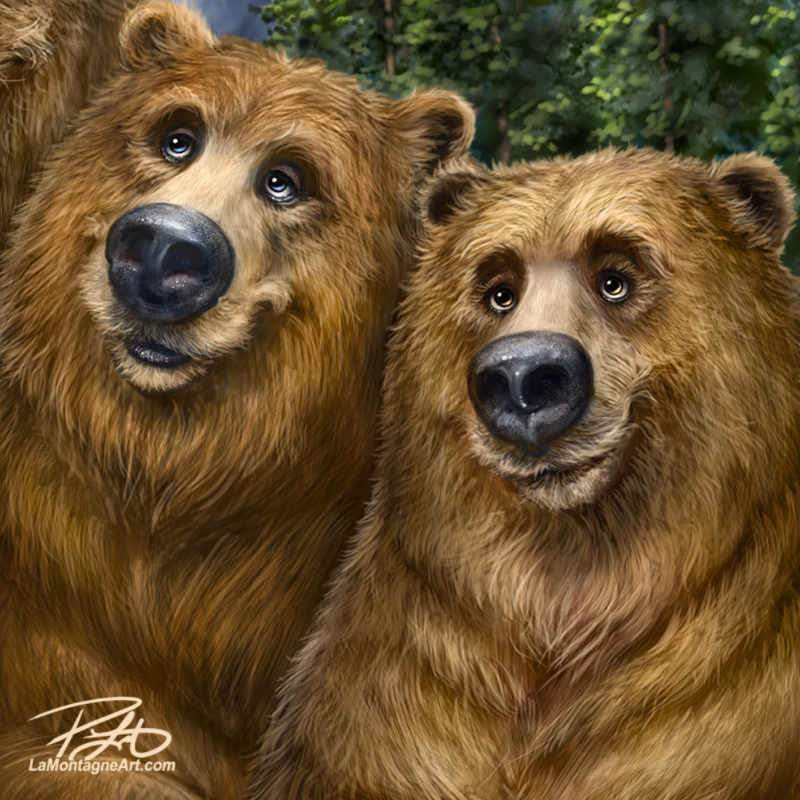 As brown bears come in many shades, from dark brown to red to blonde, I had initially planned to have a more noticeable colour difference between the five. But it looked weird, and I didn’t like it, so I erred on the side of more subtle variations in fur colour.
As brown bears come in many shades, from dark brown to red to blonde, I had initially planned to have a more noticeable colour difference between the five. But it looked weird, and I didn’t like it, so I erred on the side of more subtle variations in fur colour.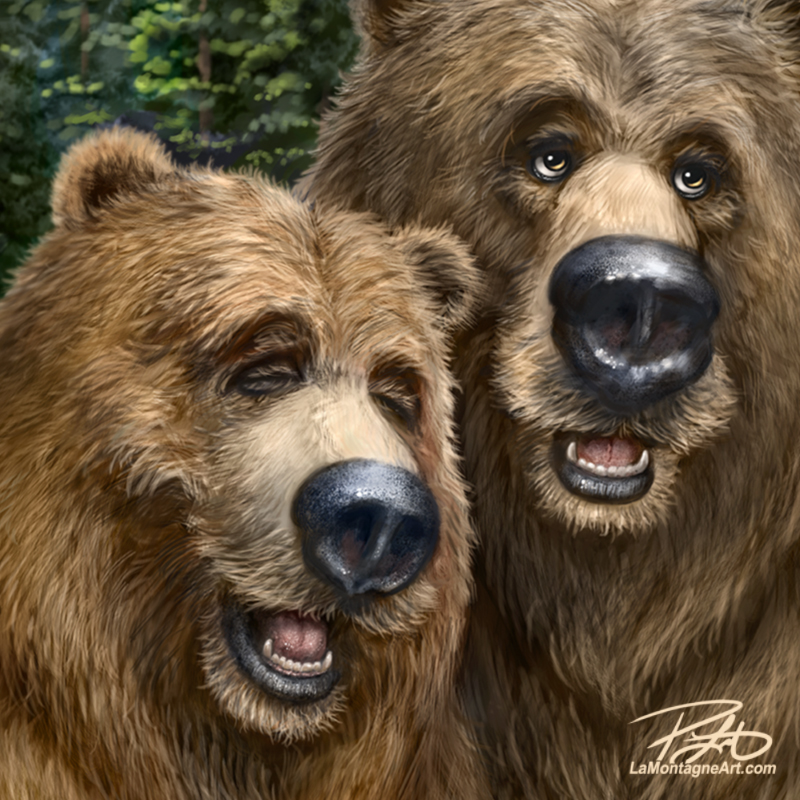 One of the nice things about working digitally is that at the end of each painting session, I can look back at the image when I opened the file and compare it to progress at the end of a session. It’s often a big difference, and that’s satisfying. However, when a painting nears completion, two hours of work may be barely noticeable before and after. That’s usually how I know it’s time to call it done.
One of the nice things about working digitally is that at the end of each painting session, I can look back at the image when I opened the file and compare it to progress at the end of a session. It’s often a big difference, and that’s satisfying. However, when a painting nears completion, two hours of work may be barely noticeable before and after. That’s usually how I know it’s time to call it done.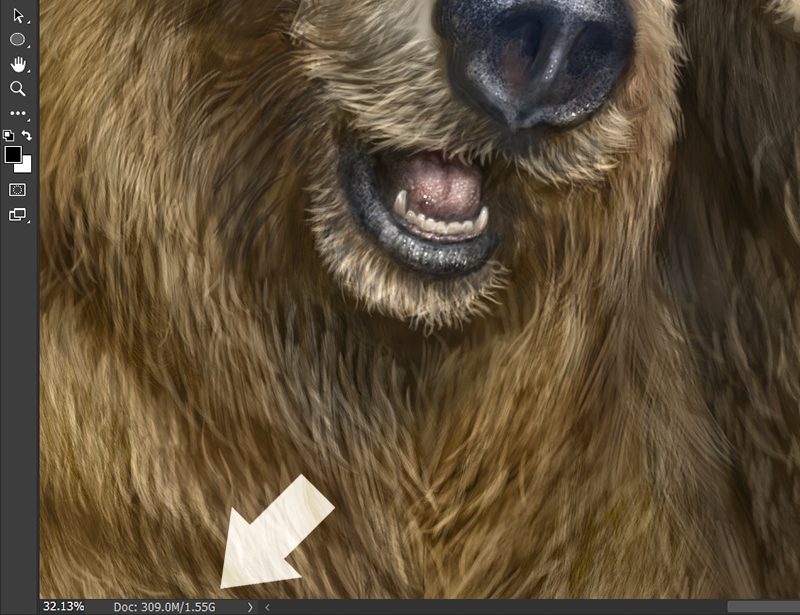 Deciding whether I like a piece or not takes time, but I’m pretty happy with how this turned out. I liked my
Deciding whether I like a piece or not takes time, but I’m pretty happy with how this turned out. I liked my 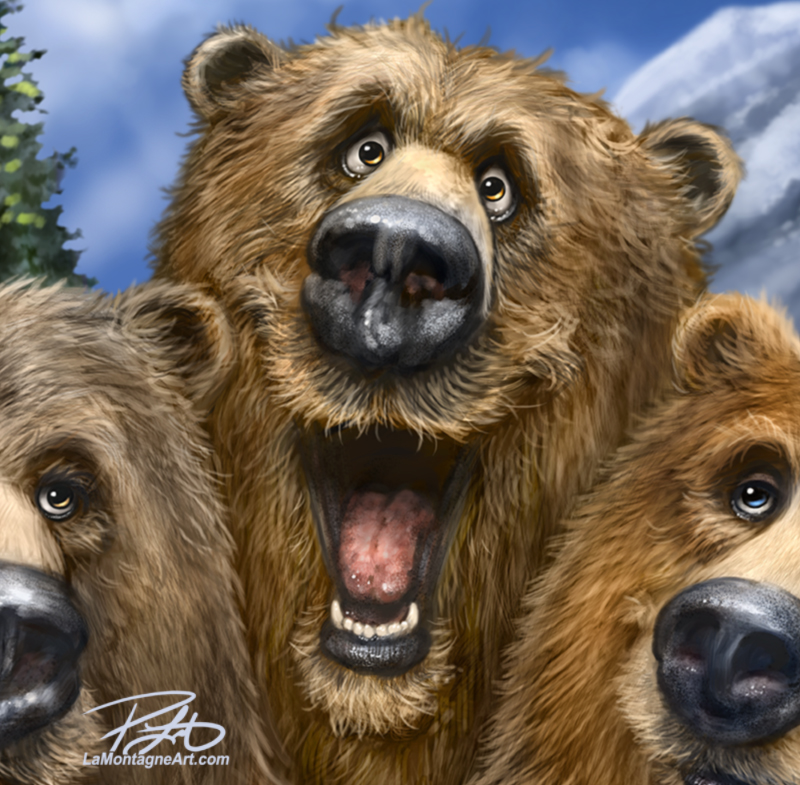 Because of the current uncertain economy, I’m not yet committing to doing puzzles again right away. But when I do, I think this grizzly family is worthy of consideration.
Because of the current uncertain economy, I’m not yet committing to doing puzzles again right away. But when I do, I think this grizzly family is worthy of consideration.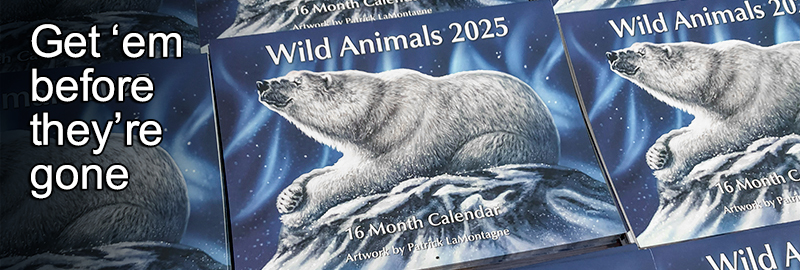

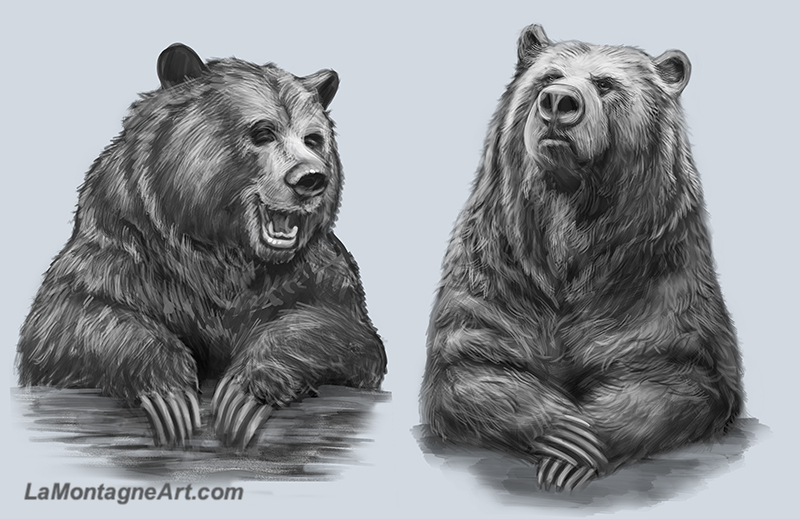 But I’ve also been working on the group of bears I’ve been chipping away at for some time now. The original plan for this piece was five adult bears sitting at a log in the woods, like a group of friends hanging out and chatting. I drew six of them separately to give myself options.
But I’ve also been working on the group of bears I’ve been chipping away at for some time now. The original plan for this piece was five adult bears sitting at a log in the woods, like a group of friends hanging out and chatting. I drew six of them separately to give myself options.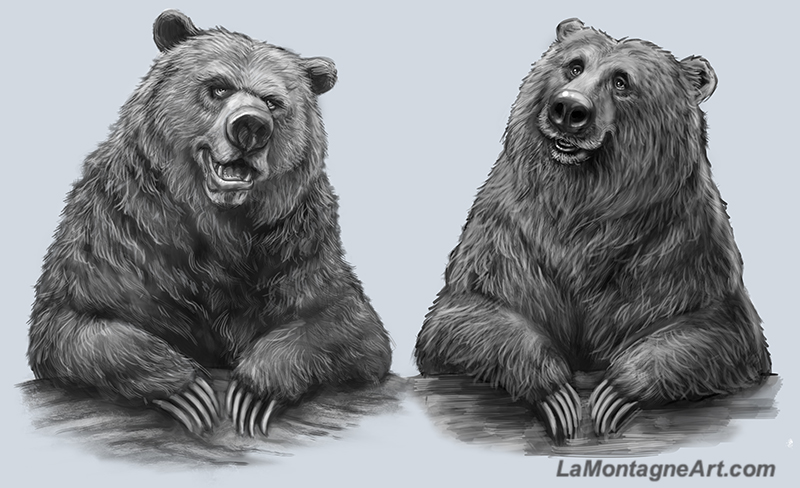 However, when I dropped and dragged them together into one image, the digital canvas was very long. A long horizontal canvas has appeal for a canvas or metal print. However, from a commercial perspective, it would limit what I could offer for licensing and paper prints.
However, when I dropped and dragged them together into one image, the digital canvas was very long. A long horizontal canvas has appeal for a canvas or metal print. However, from a commercial perspective, it would limit what I could offer for licensing and paper prints.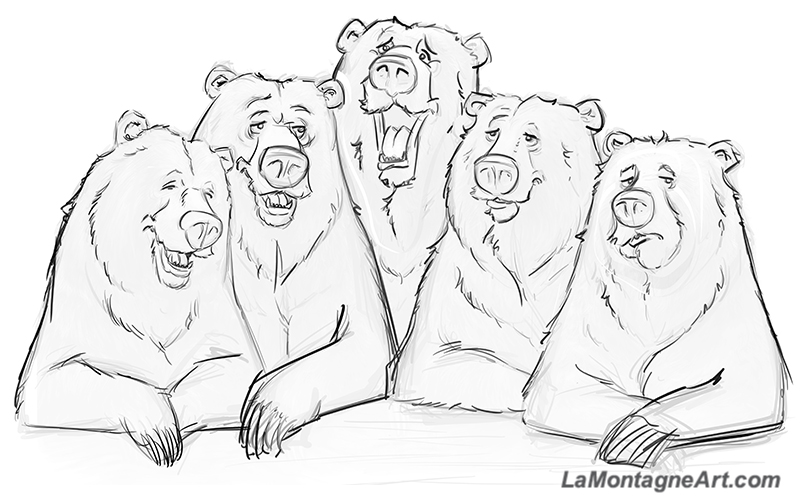 Once I was pleased with the group layout, I dropped the layer’s opacity and traced over the shapes and basic features. I did this several times, refining with each pass.
Once I was pleased with the group layout, I dropped the layer’s opacity and traced over the shapes and basic features. I did this several times, refining with each pass.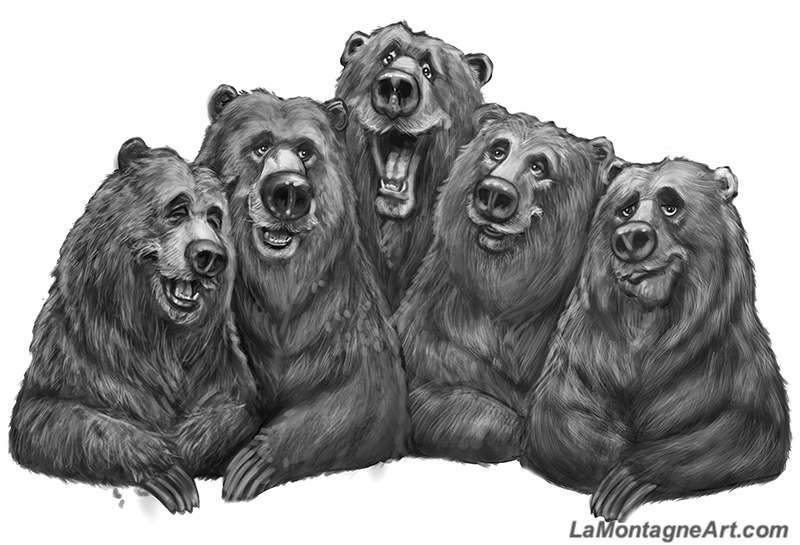 Then, I got to work on the shading, detail, expressions, and character. I do that right up until the end of every painting, as personality is the most essential part and is where I have the most fun. And with this painting, I’ve got five faces to discover instead of one.
Then, I got to work on the shading, detail, expressions, and character. I do that right up until the end of every painting, as personality is the most essential part and is where I have the most fun. And with this painting, I’ve got five faces to discover instead of one.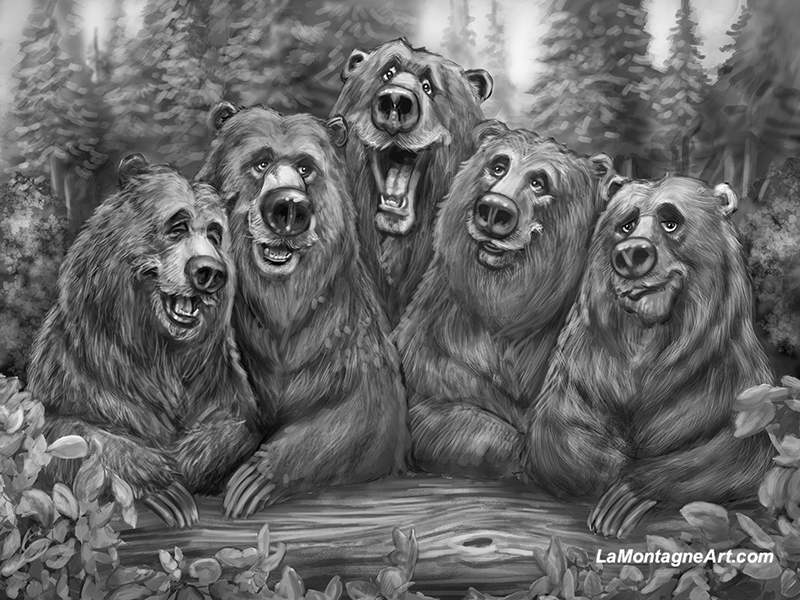 This piece seems like a family posing for a Sears portrait or the opening of a sitcom like Family Ties or Growing Pains. I’m going to call it ‘The Grizzlies.’
This piece seems like a family posing for a Sears portrait or the opening of a sitcom like Family Ties or Growing Pains. I’m going to call it ‘The Grizzlies.’

